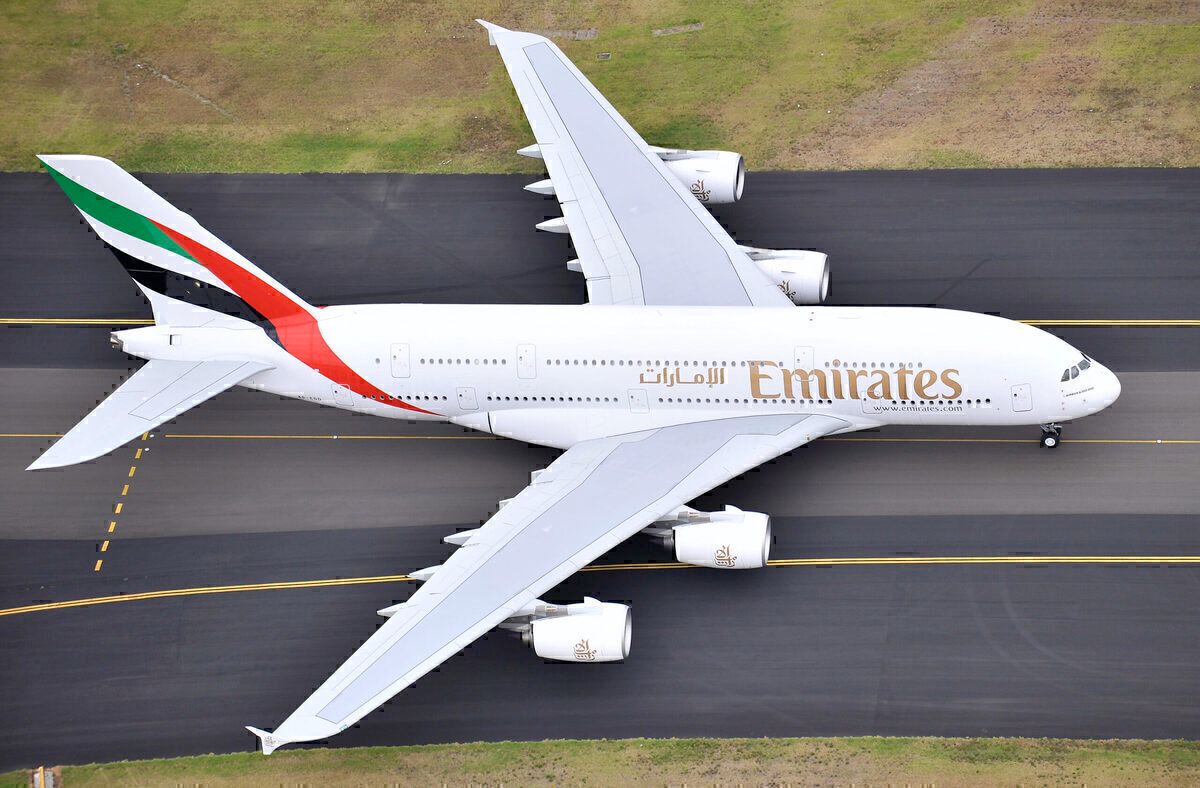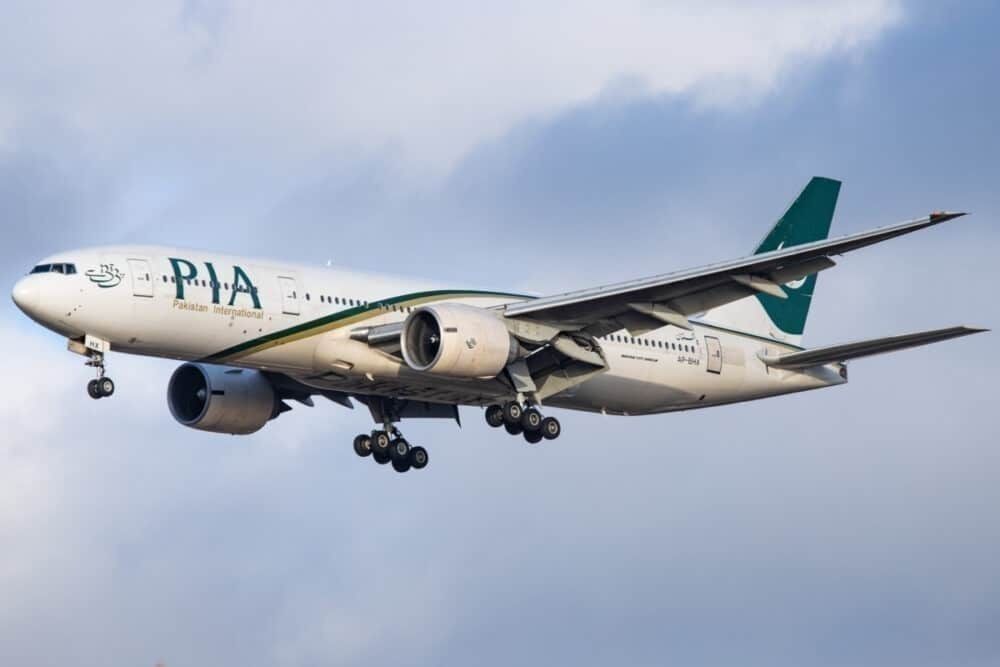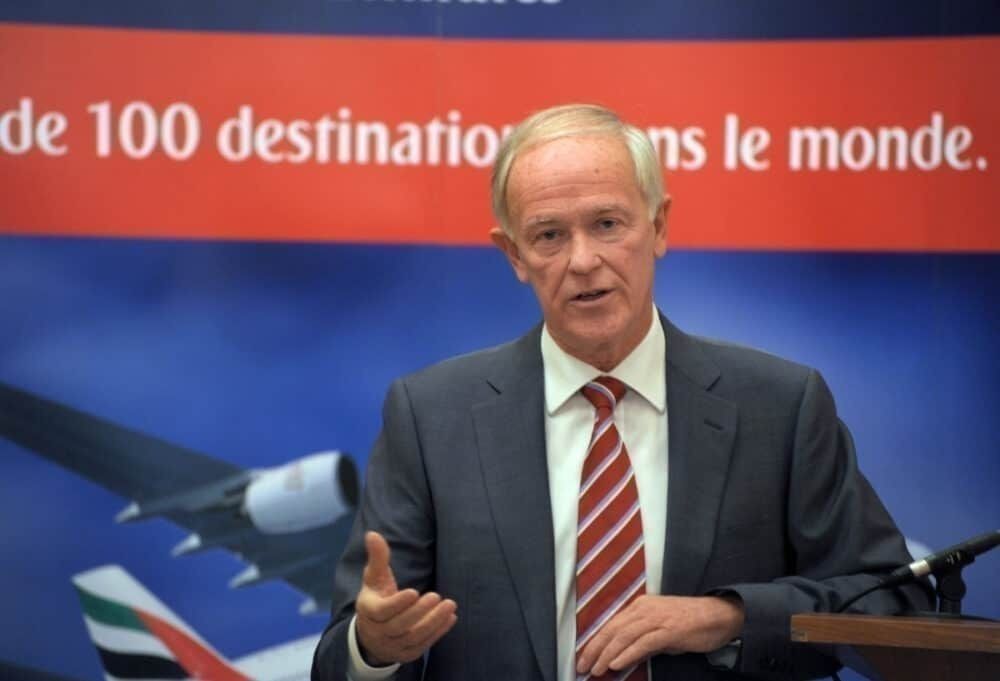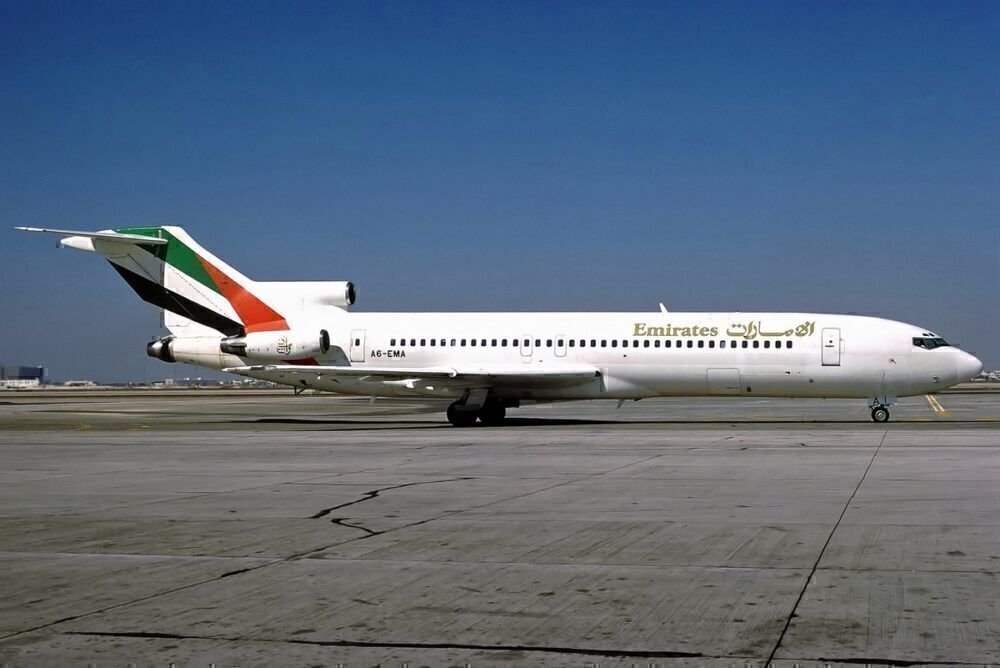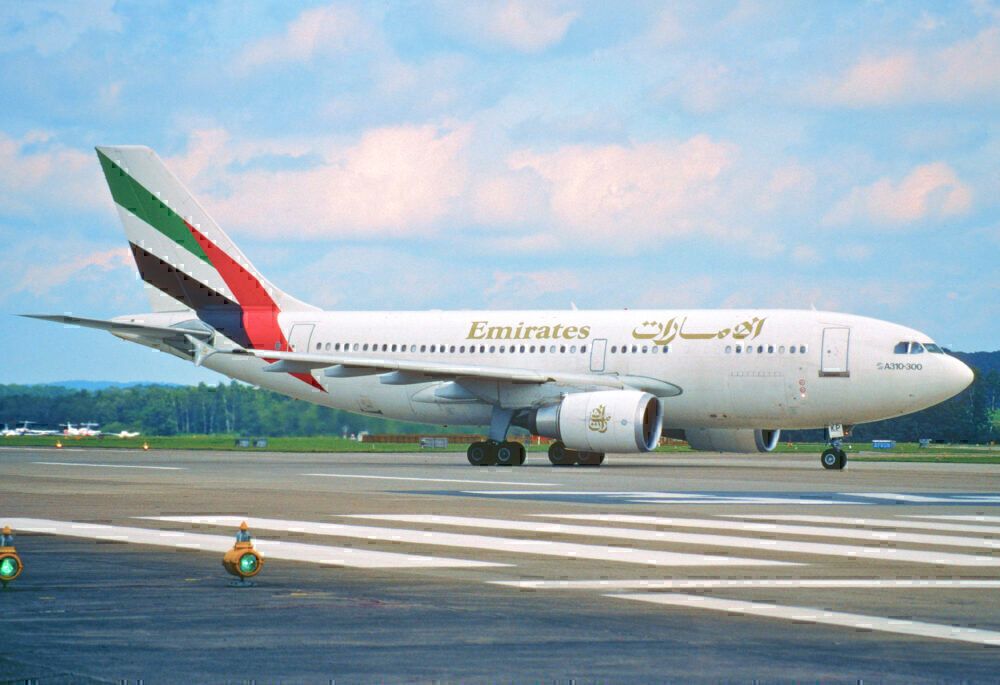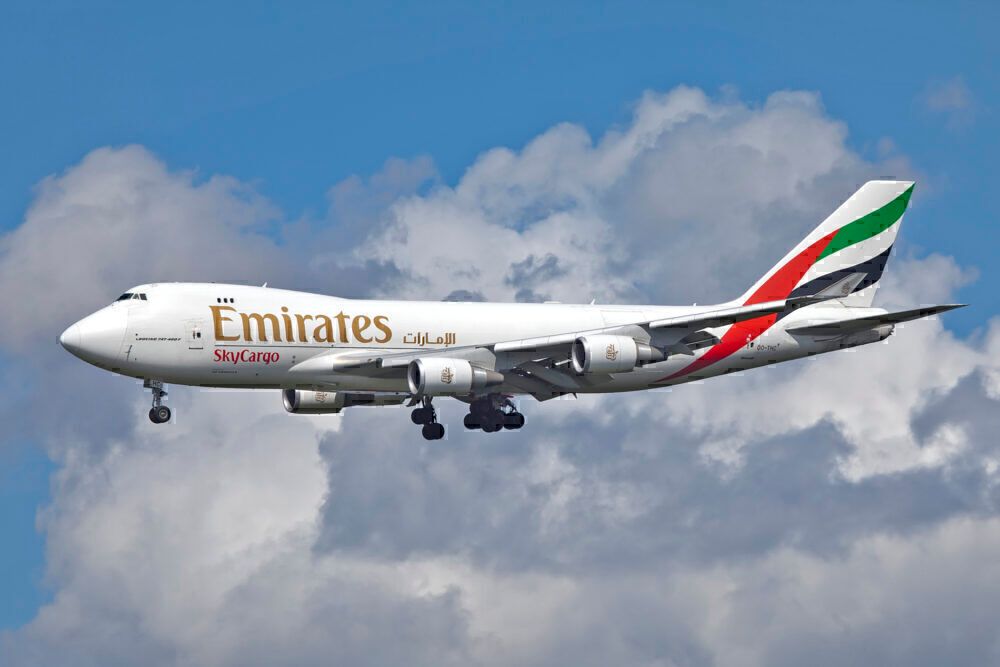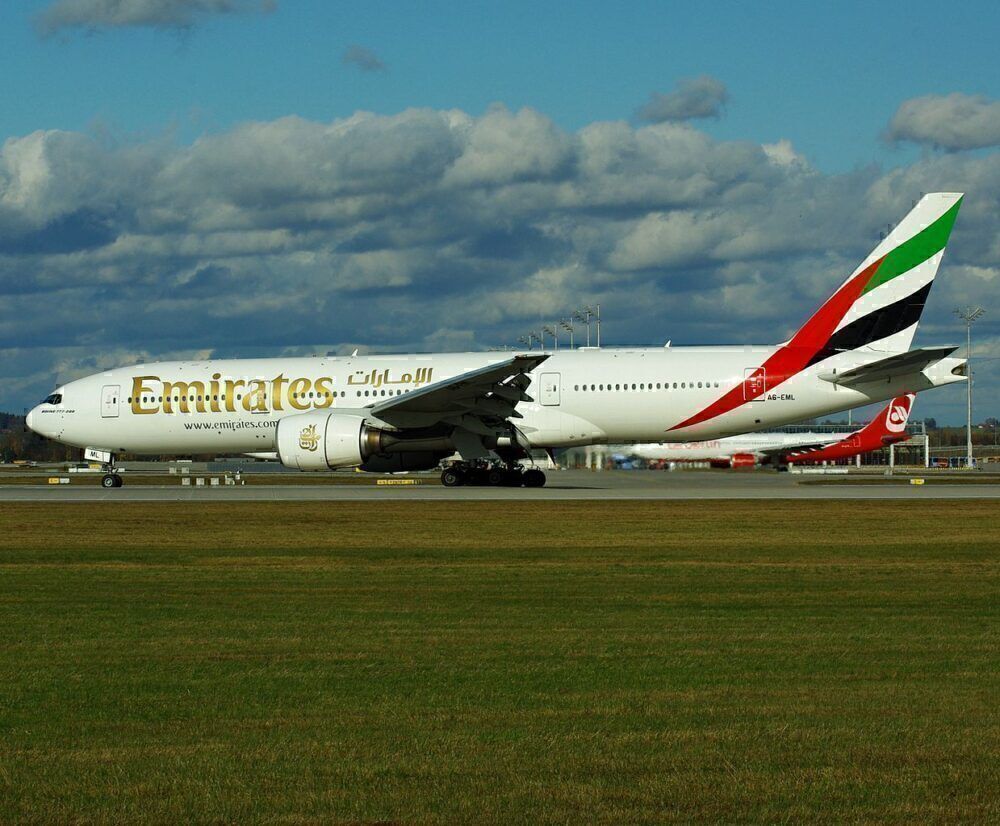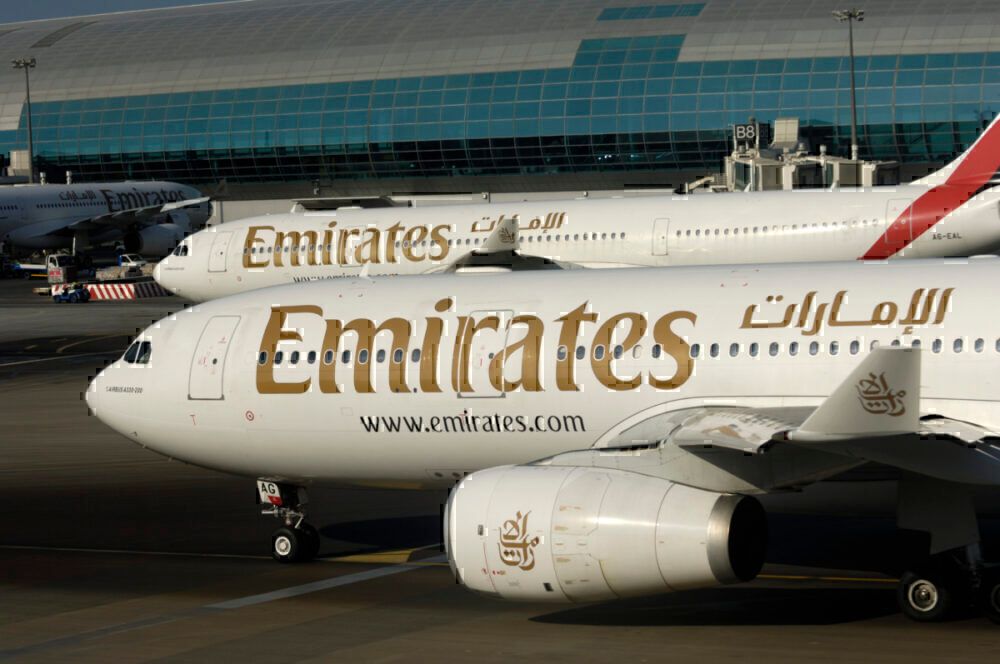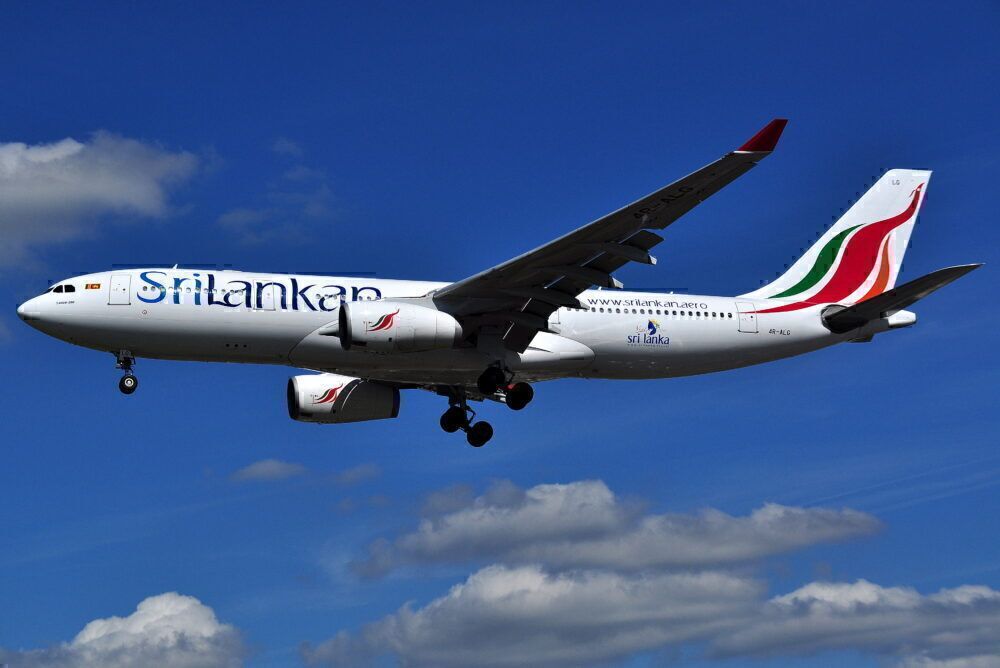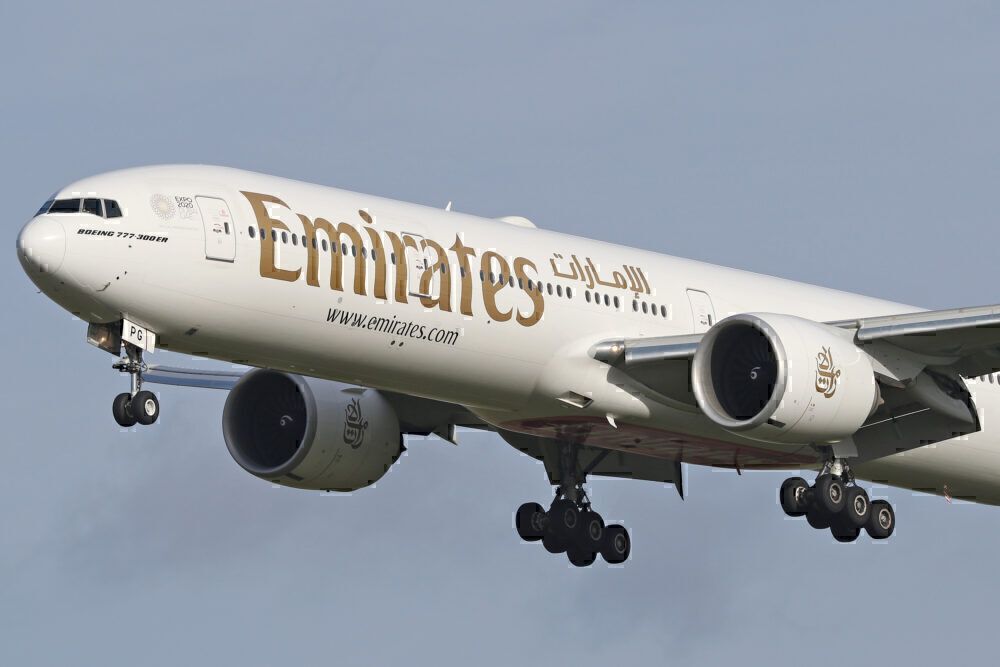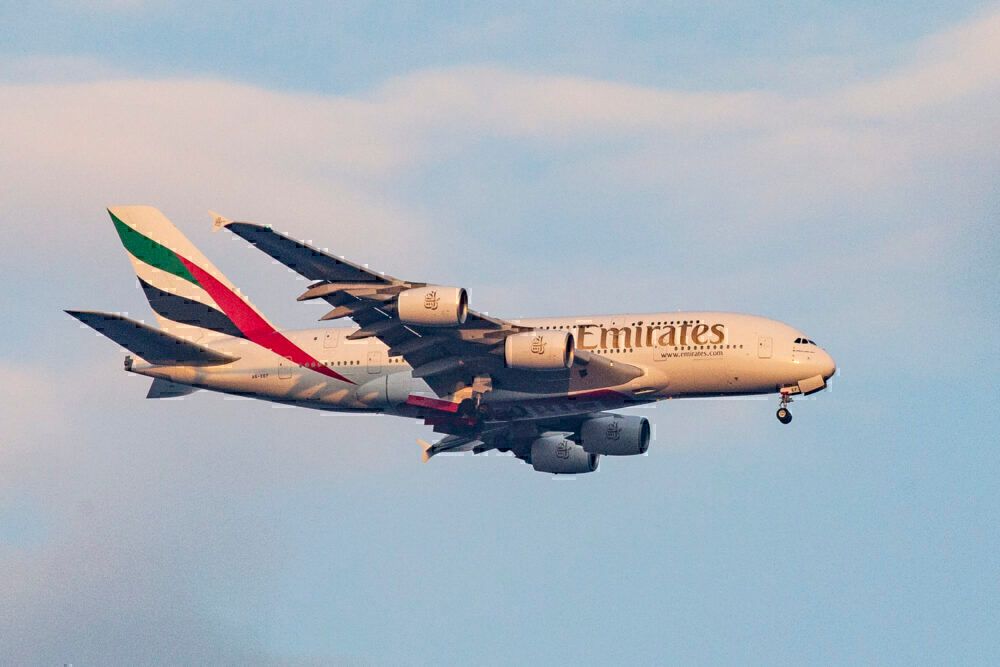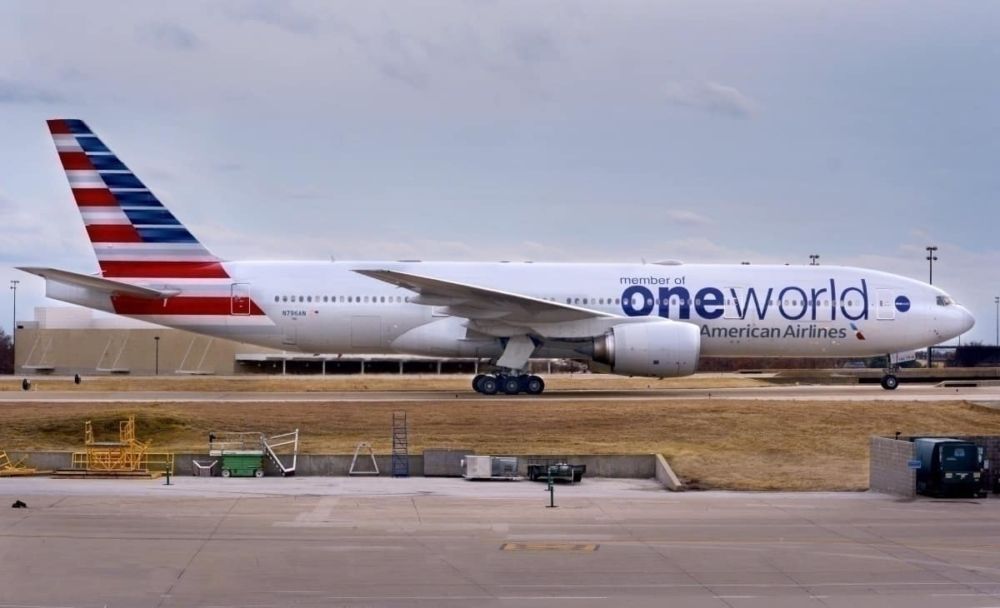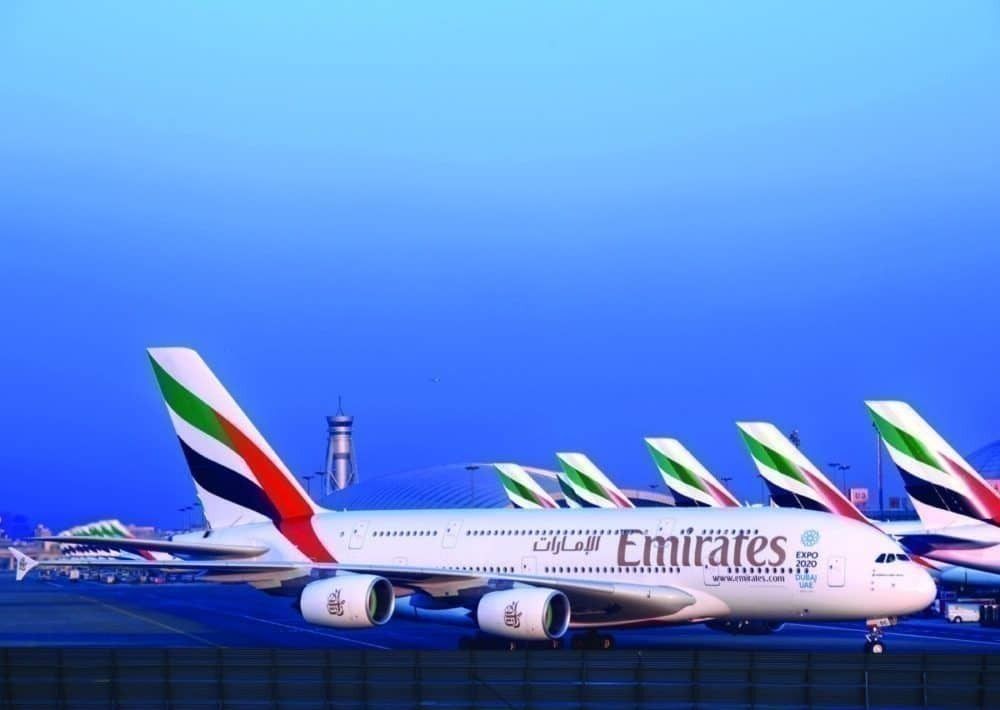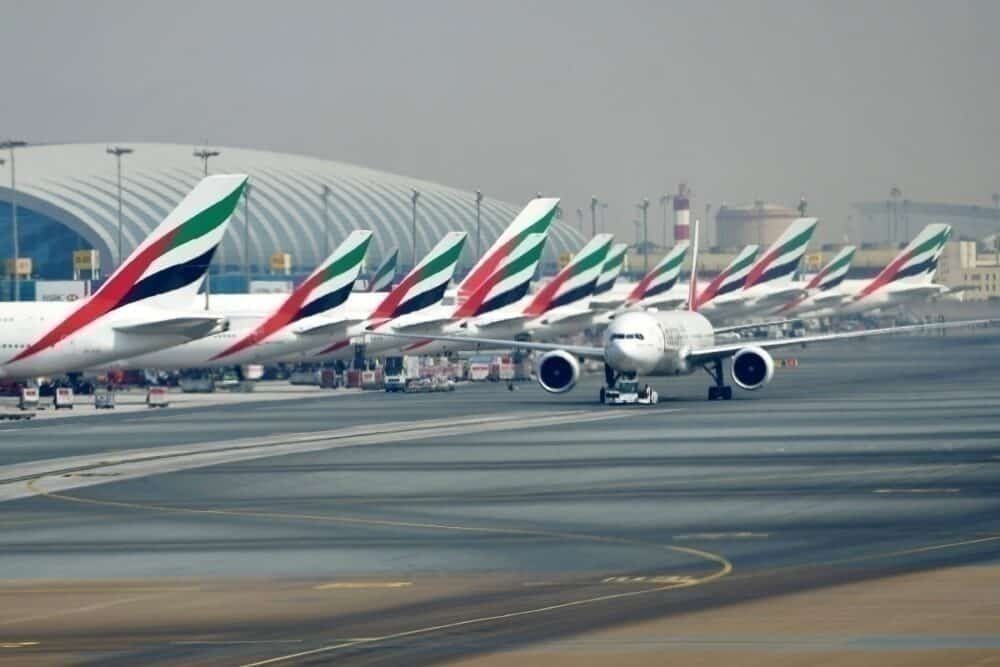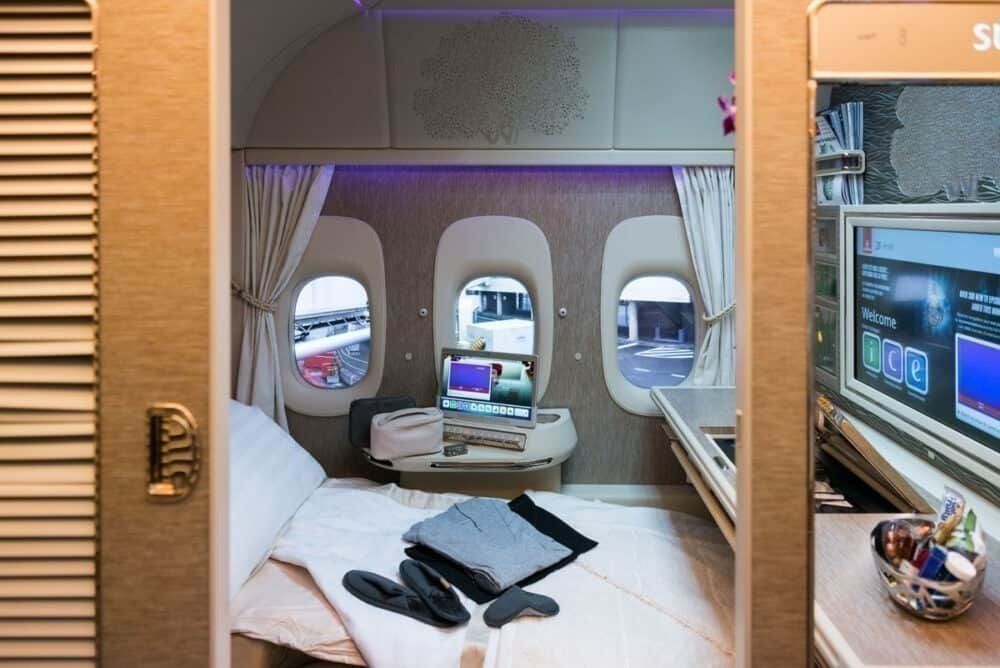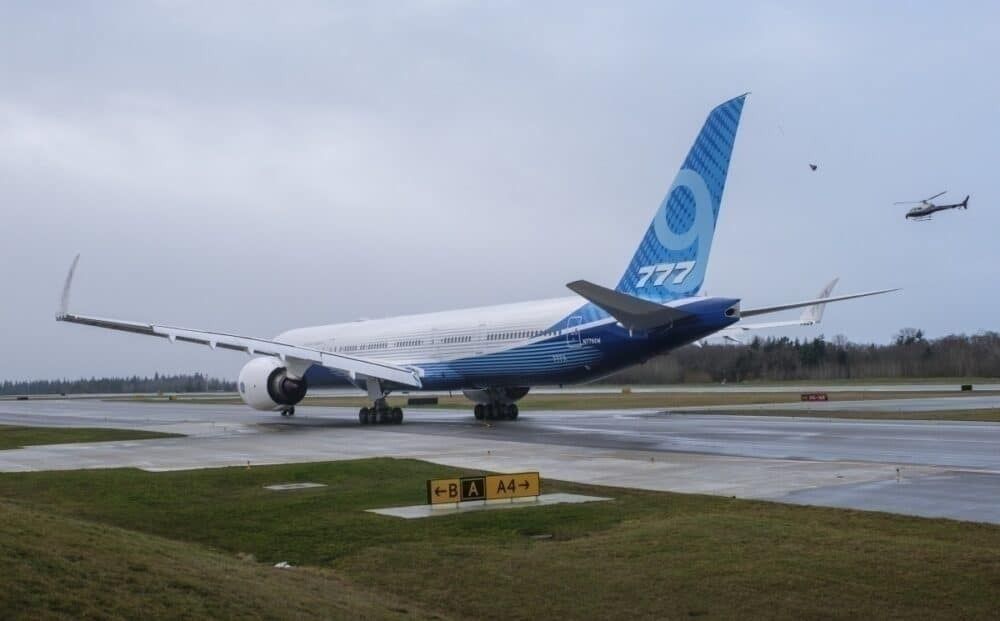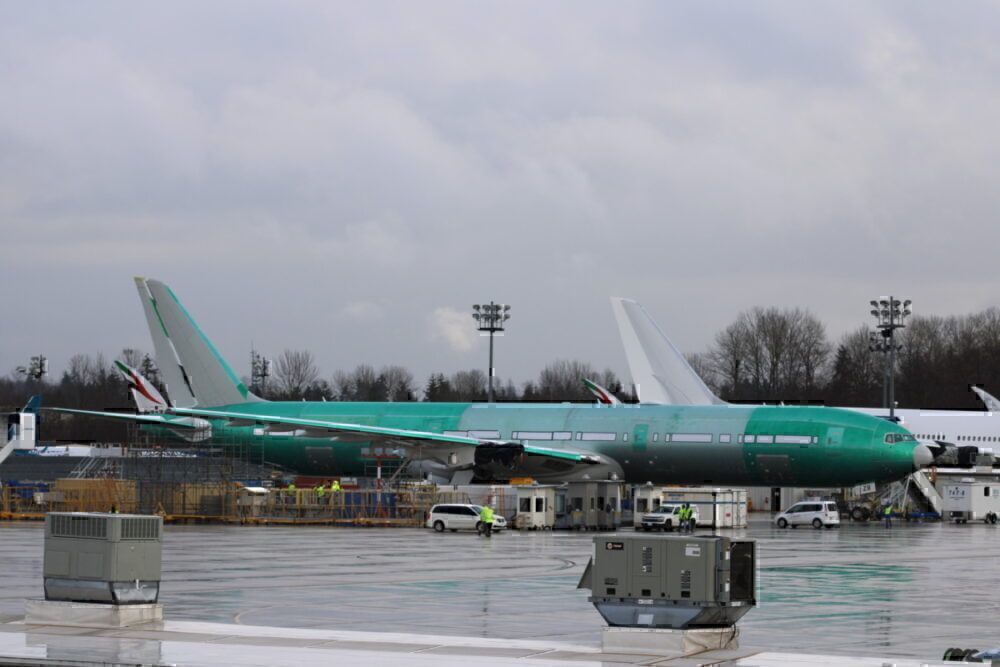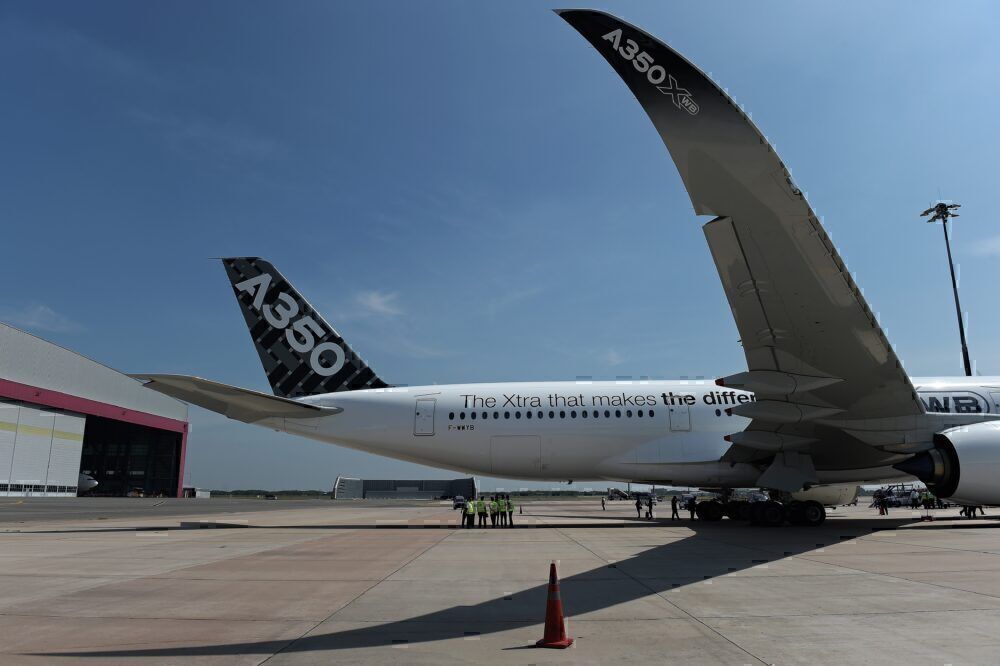Emirates today is one of the largest and most well-connected airlines around. And it stands out with its impressive all-widebody fleet of A380s and 777s. To reach this size, it has grown incredibly rapidly, having only been founded in 1985. In some ways, its entire founding was a chance happening to fill a void left by Gulf Air in the region. This article looks back at the founding, development, and rise of Emirates over the past 35 years.
[powerkit_toc title="Table of Contents" depth="2" min_count="4" min_characters="1000"]
Origins of Emirates in 1985
Emirates traces its start back to just 1985. This makes it a young airline when compared to carriers such as British Airways, KLM, and Qantas, who have been celebrating 100-year anniversaries. It was the first of the major Middle Eastern hub airlines to be established. Qatar Airways was not started until 1993, and Etihad Airways in 2003.
The need for an airline based in Dubai came about after Gulf Air, a main carrier for the region, began removing some of its regional services. It felt as though it was feeding passenger traffic to Dubai, which would then board competitors' long-haul flights. A new airline was proposed by the Dubai royal family, focussed on connections within the region.
Investments and leadership team
Emirates started small, with funding from both the Dubai royal family and Pakistan International Airways (PIA). PIA also provided technical expertise and administrative assistance. It took a mere $10 million start-up capital from the Dubai government and repaid this within a year. PIA also provided the initial aircraft.
Maurice Flanagan was brought in to set up the airline. He had previously worked in management at BOAC and British Airways for 25 years, and since 1978, had been the director of the Dubai National Air Travel Agency. Flanagan remained with the airline until 2013. He was joined in the startup team by Tim Clark, now the airline’s President. Clark had worked previously with Gulf Air.
The airline's first chairman and CEO was Sheikh Ahmed bin Saeed Al Maktoum, the son of Dubai’s former ruler. He retains the role to this day, as does Sir Tim.
Starting with regional flights
PIA leased the new airline its first two aircraft, one Boeing 737-200 and one Airbus A300-200. Aircraft were painted in Emirates livery, but were operated initially by PIA pilots and crew. They were replaced as Emirates crew were recruited and trained.
It also operated two Boeing 727-200 aircraft on loan from the royal family’s Dubai Air Wing. These were upgraded ‘Advanced’ models, with increased range and more powerful engines. These 727s stayed with the airline until the mid-1990s. The sole 737 was returned to PIA in 1987.
Emirates began flights on October 25th, 1985, with the first flight being EK600 from Dubai to Karachi. This was a fitting first destination, given the strong involvement of PIA. The first routes were regional, including Mumbai, Delhi, Colombo, Amman, Dhaka and Cairo.
As Head of Airline Planning in the early years, much of the regional and later international route development was due to Tim Clark. Even as Emirates has grown today to cover the globe, this strong regional base in the Middle East and Indian subcontinent remains key.
It had early success, helped by strong advertising in the region. In its first year, it carried 260,000 passengers and was profitable. In the same year, its main rival, Gulf Air, saw profits fall by over 30%.
Purchasing aircraft and expanding further
Emirates had launched services and started operations quickly and with a limited budget, thanks largely to assistance from PIA and the Dubai Royal Family. By 1987, the airline was ready to go further under its own steam.
In July 1987, it purchased its first two aircraft, two Airbus A310s. The airline would eventually take on a total of 13 A310s and seven A300s. With these, it began further services out of the region. Flights to Europe began in 1987, with services to London Gatwick and Frankfurt. Istanbul and Male were added the same year.
Defining itself in the 1990s
Route expansion continued in the 1990s. Flights to Asia began in 1990, with Manila and Singapore the first destinations. Hong Kong was added in 1991. For Europe, Paris, Rome, and Zurich service began in 1992.
Emirates also partnered with US Airways from 1993. This allowed it to offer more destinations and round-the-world flights much sooner than if it had waited to have its own capacity.
Emirates was marketing itself as a premium airline, with a corporate focus, with the slogan “'the finest in the sky.” It focussed on luxury offerings in premium classes. And it was one of the first airlines to install entertainment systems at every seat. The same marketing focus continued in later years, too, with “Be good to yourself. Fly Emirates,” the new slogan in the late 1990s.
With many of the surrounding countries being shareholders in competitor Gulf Air, Emirates knew it would struggle with local connections. It focussed instead on the regional and long-haul markets and connecting traffic. The strategy worked, and by 1993 it carried 1.6 million passengers a year.
It also focussed strongly on cargo services from the outset. It took this further with the launch of Emirates Sky Cargo in 1998. This initially operated aircraft under lease from Atlas Air but allowed Emirates to built up dedicated freight schedules and routes.
Introducing the 777 and the A330
With expansion came new aircraft. Emirates ordered seven Boeing 777s in 1992 (one 777-200 and six 777-2000ER aircraft). This was remarkable as it came just after the Gulf War, which had caused difficulties for many other airlines in the region. Emirates flew even in the late days of the war, covering higher insurance and increased fuel cost. In fact, the events benefited the airline, as many foreign airlines restricted their flights to the region.
The first of the 777s arrived in 1996. Emirates quickly launched a 777 service to Australia (with a stop in Singapore). This would go on to become one of the airline's most successful routes.
Emirates also added more Airbus aircraft. It began to take delivery of the A330-200 in 1999 and went on to take 29 of these. They remained in the fleet until 2016.
Investment in SriLankan Airlines
In May 1998, Emirates took a 40% stake (for $70 million) in Air Lanka (later to become SriLankan Airlines). As part of the investment, Emirates managed the airline for the next 10 years, with Tim Clark taking up the position of Managing Director.
This saw Emirates take control of ground handling and catering operations at Colombo and re-define the airline's image and strategy. The name was changed to SriLankan Airlines soon after Emirates involvement began, and its fleet and route network expanded.
When the management contract ended in 2008, Emirates pulled out. It sold its stake (by then increased to 43.6%) back to the Sri Lankan government.
Rapid expansion in the 2000s
By the turn of the century, Emirates had a fleet of 30 aircraft and operated to 28 destinations. By the end of the 2000s, it would add another 46 destinations to this.
2001-2002 was a difficult time for Emirates, as it was for many other airlines. The events of September 11th, 2001, affected aviation globally. On top of this, the bombing of Colombo airport earlier the same year had already hurt airlines in the region. Emirates responded to the drop in bookings with a recruitment freeze and reduced schedules but came through better than many other airlines.
As reported by Arab News in 2002, Emirates ended 2001 with a record profit, growing 11% over the previous year. It attributed the success partly to how it handled passengers and plans throughout the problems. It also benefited from regional pullbacks from other airlines, similar to what was seen during the Gulf War.
New aircraft orders
To meet expansion plans, Emirates placed further aircraft orders with both Boeing and Airbus. The huge orders placed in 2003 and 2005 show just how quickly it recovered from the events of 2001.
With Boeing, it significantly expanded its fleet of 777 aircraft, putting it on track to become the world’s largest operator of the type. From 2000, it placed the following 777 orders:
- July 2004: 4 777-300ER
- November 2005: 24 777-300ER and 10 777-200LR
- July 2007: 12 777-300ER
- April 2010: 18 777-300ER
- July 2010: 12 777-300ER
- November 2011: 44 777-300ER
And with Airbus, it ordered both the A340 and the A380. It added to its A330 fleet with the four-engine A340. And, of course, built up its fleet of A380 aircraft. This saw some equally impressive orders:
- 2000: Emirates was the first airline to order the A380, placed an order for seven aircraft, with five more options at the Farnborough Airshow in 2000.
- 2001: 15 A380
- 2003: 2 A340-500 and 18 A340-600 aircraft, and 21 more A380 aircraft. It would later cancel some of the A340 orders.
- 2006: 2 A380
- 2007: 15 A380
- 2010: 32 A380
- 2013: 50 A380
The first A380 aircraft were delivered in 2008. Emirates also opened the first dedicated A380 concourse in Dubai in 2015.
Focus on America and Asia
As the fleet grew, so did the destinations served and frequencies it could offer. The 2000s and early 2010s saw much more expansion, particularly with routes to Asia, Australasia, and the US. Emirates now began taking on other airlines on lucrative Asia to North America routes. They could offer one-stop services via Dubai, just as any European airline could via their hubs.
Going it alone with Skywards
This was also the era of the airline alliance. The first alliance, Star Alliance, formed with five airlines in 1997, oneworld with five airlines in 1999, and SkyTeam in 2000 with four founding members. They all expanded over the coming years to take on most of the major global airlines as members.
These alliances brought advantages to both airlines and passengers. Airlines could offer more flights, with connections easier to manage through alliance agreements. And loyal passengers would receive frequent flyer benefits across a wider range of airlines.
Emirates, though, decided to go it alone and not join an alliance. It would instead focus on its own connections and building its global network. It was not alone in this. Of course, Etihad Airways is still not a member of an alliance, and Qatar Airways only joined oneworld in 2013.
It launched its own frequent flyer program, Skywards, in 2000. It uses this in a similar but less formalized way to alliances. Emirates has built a network of partner airlines, where frequent travelers can collect and use miles and share limited tier benefits with some.
Making the A380 work
We can’t discuss the growth of Emirates in the 2010s without looking at its use of the A380. Ordering so many of the aircraft, and so quickly, was a major strategic decision for Emirates. And in many ways, it has made the A380 work well, whereas many other operators have struggled, to the point of retiring fleets early.
Airbus designed the A380 as an aircraft for hub operations. It believed in the possibilities of this way of operating, offering both higher capacity for busy routes and more efficient use of limited slots at busy airports.
Emirates is a true hub operator and has used the A380 for this. It can bring in passengers from many destinations to fill aircraft on key routes. Other operators have shifted more to the point-to-point model, favoring lower capacity flights from smaller airports.
There is also a cost advantage of having a large fleet. It can bring lower operating costs with simpler maintenance, crew rotation, and flight scheduling. We see it often with low-cost carriers, such as Southwest Airlines and its use of the 737, but not so often with full-service airlines. Many operators with just small A380s fleets have found this difficult.
Emirates today
Emirates has continued its growth, taking delivery of more A380 aircraft. As of 2020, it operates a fleet of 115 A380s and 151 777s.
It has also continued its focus on high-quality service and corporate appeal with impressive premium cabins. In 2016, it won the Skytrax airline of the year award for the first time.
It has introduced some of the best first class products in the air as well. In 2017, it was the first airline to install a fully closed suite in first class. This features just six private suites, so far only on some 777 aircraft. Other 777s and the A380 offer semi-enclosed private suites, and the A380 features a great bar and lounge area.
Emirates has also recently launched a new premium economy product, a latecomer to the idea, but the first of the major Middle Eastern airlines to do so. It is expected to be seen on an A380 by the end of 2020.
Moving to a more diverse fleet
We have come to know Emirates as an operator of just two aircraft types in recent years. And it has made this strategy work. But this will change over the coming years, with new aircraft on order. In the coming years, it will operate a mixed fleet with the Airbus A380 and 777 joined by the Boeing 777X and 787, and the Airbus A350.
Ordering the 777X and 787
The first major new order was for the Boeing 777X in 2013. As the world’s largest operator of the 777, it was not so surprising that Airbus chose to take this forward with the new 777X.
Its order for 150 aircraft, though, was more surprising. This is the largest ever order for new aircraft, valued at $76 billion ($83 billion in 2020). It initially ordered 35 Boeing 777-8 and 115 Boeing 777-9 aircraft. The order was changed in 2019, with 30 787-9 Dreamliners replacing 24 777X aircraft. It is thought this was due at least in part to the delays with 777X development.
Ordering the A350
Following its strategy to move into more efficient twin-engine aircraft, Emirates considered both the Boeing 787 and the Airbus A350 to operate alongside the 777X. It reached a decision with the A350 and announced its major order for 50 A350-900 aircraft at the Dubai Airshow in 2019.
His Highness Sheikh Ahmed bin Saeed Al Maktoum explained the decision, saying,
“Today, we are pleased to sign a firm order for 50 A350-900 XWBs, powered by Rolls-Royce Trent XWB engines. This follows a thorough review of various aircraft options and of our own fleet plans. It is Emirates’ long-standing strategy to invest in modern and efficient aircraft, and we are confident in the performance of the A350 XWB.”
It also ordered 40 A330neo aircraft at the Dubai Air Show in 2019. There was some uncertainty whether this would stick alongside the 787 order, but this was dropped by the end of the year.
Canceling some orders
Emirates canceled some A380 orders in 2019. These cancellations led to the announcement the same year from Airbus that it would end production of the A380.
The events of 2020 have hit all airlines hard, and Emirates is no exception. Despite some talk of canceling more of these orders (as of November 2020, it still has to receive eight aircraft), it seems it will stick with them. In fact, with other airlines retiring them, Tim Clark has commented that he thinks they could be even more popular.
As for other outstanding orders with Boeing and Airbus, we will need to wait and see if any changes follow. This could be possible given the expected reduction in demand over the coming years, but perhaps we may see just delays rather than cancellations.
Tim Clark explained the challenges, reported by Executive Traveller, saying:
“We are nowhere near confident enough that the economics, the cash flows, the bottom line will put us in a good position to be able to guess if we’ll buy a hundred of this or a hundred of that.”
Would you like to share any thoughts on the origins and development of Emirates? Or any experiences flying on its aircraft? Let us know in the comments.

